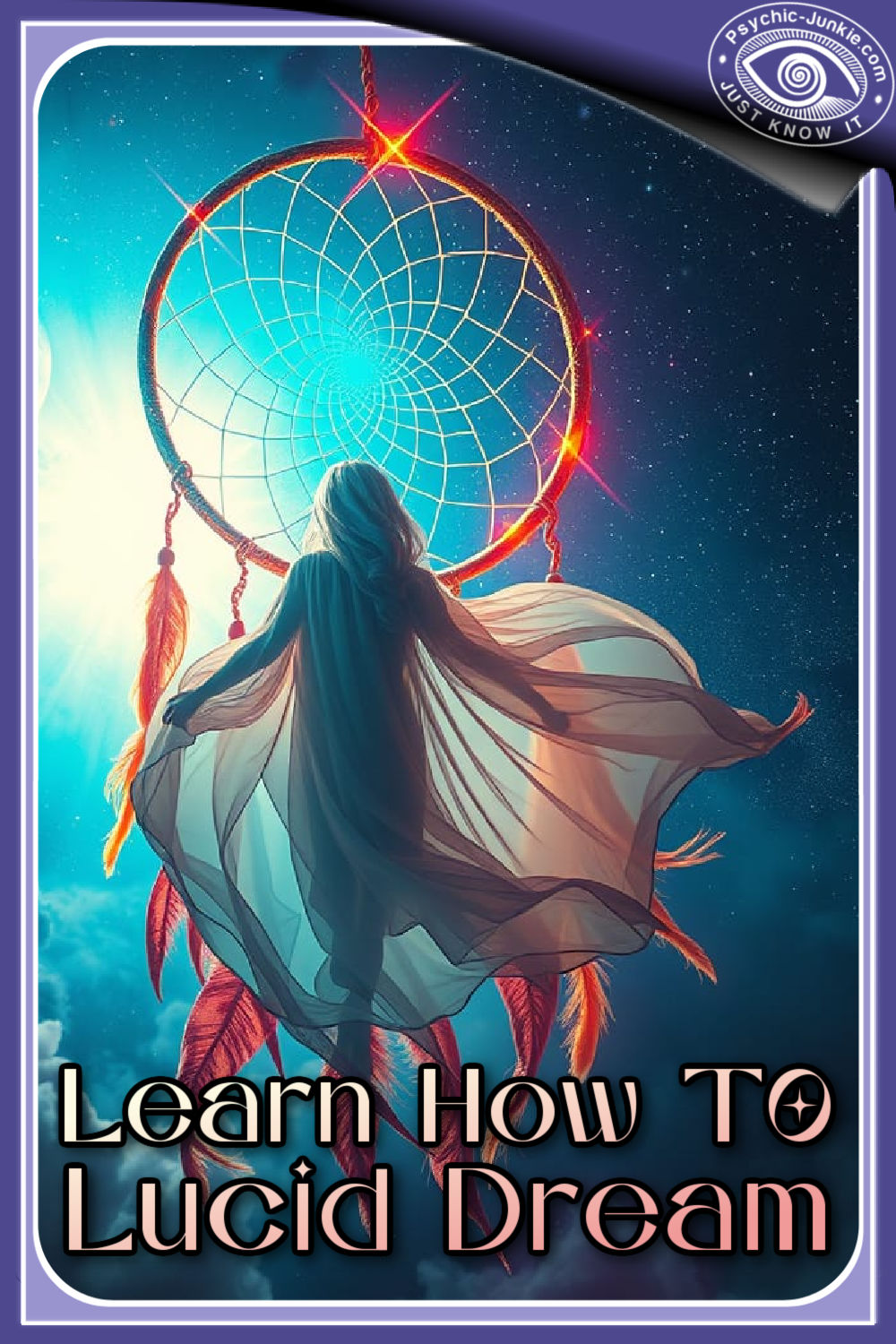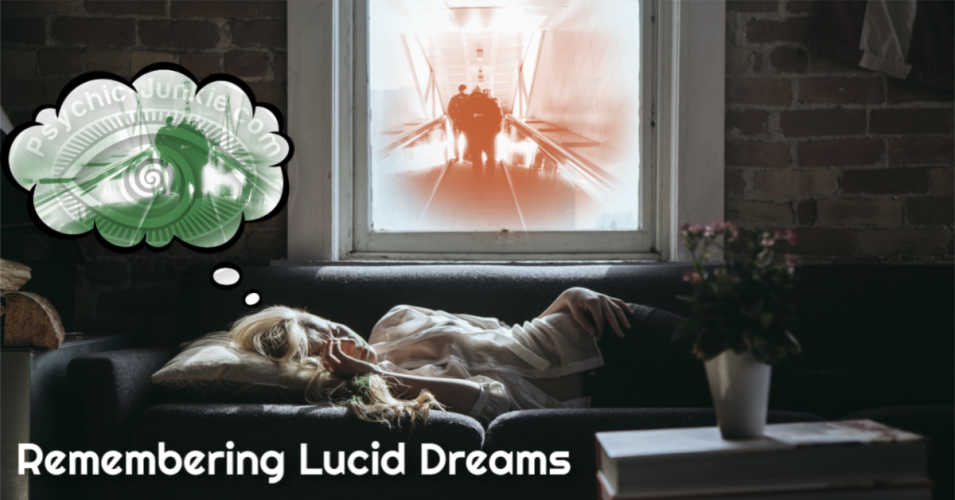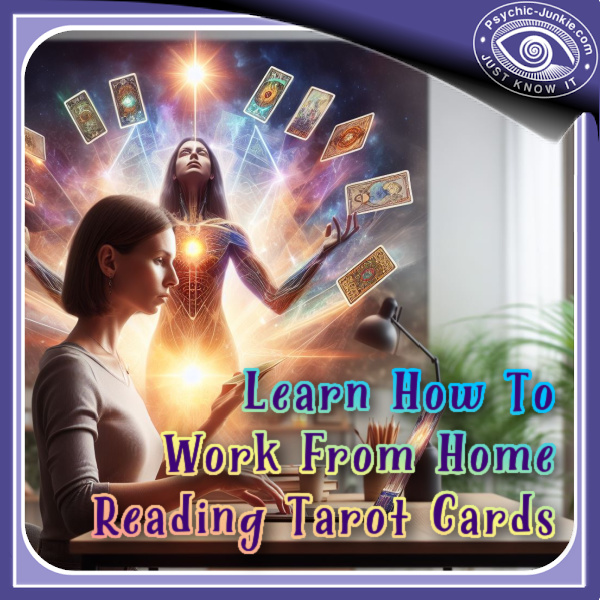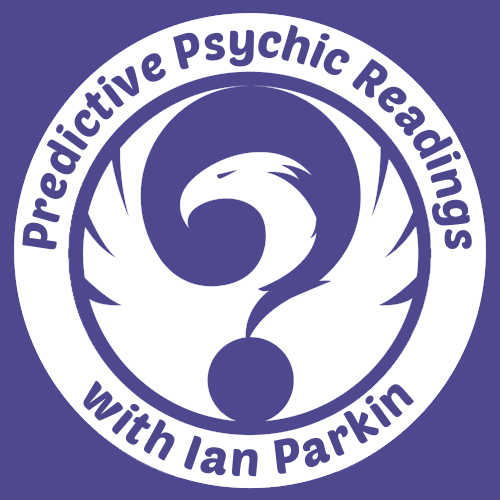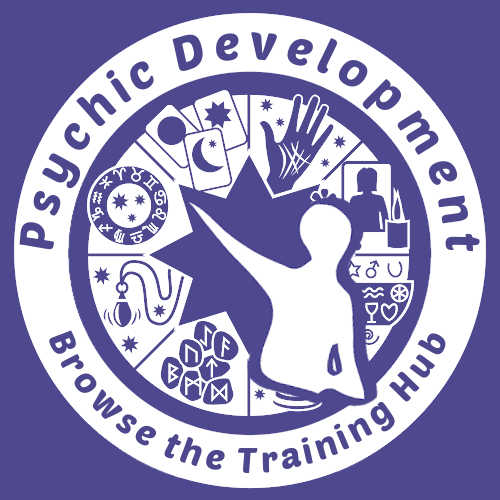- Home
- Dream Readings
- How to Lucid Dream
Ian Parkin is the author of this post.
How To Lucid Dream - Learn The Best Ways To Master This Skill Tonight
Learning how to lucid dream offers you unparalleled freedom and vivid experiences. As you hone the art of lucid dreaming, you step into a boundless world where every adventure feels breathtakingly real, leaving an indelible mark on your memory. This guide is designed to help you unlock the ability to consciously navigate and shape your dreams. There's an array of motivations to explore lucid dreaming - perhaps the sheer thrill of it! Even the simple act of flying within a lucid dream can offer an unparalleled surge of exhilaration. Lucid dreams stand out in their intensity and vividity, distinct from standard dreams.
When you venture into lucidity during dreams, opportunities abound:
- Unwind and Relax: After a taxing day, let your dream be the perfect retreat.
- Spiritual Connections: Engage in profound dialogues with your higher self and spiritual guides.
- Timeless Conversations: Channel the wisdom of brilliant minds from history, or even those of the imagined future.
- A Flight of Fantasy: Feel the pure joy of soaring amongst the clouds, free as a bird.
- Live Out Fantasies: Delve into wild, imaginative scenarios you've only ever dreamt of.
- Business Insights: Find inspiration and innovative ideas that could revolutionize your work.
- Perfecting Skills: Practice and refine your athletic or other skills in a controlled dream setting.
- Authorial Inspiration: Discover narratives and ideas, birthing the seeds for your next writing endeavor.
Embarking on the journey of lucid dreaming not only promises exhilaration but also provides a unique platform for self-discovery and growth. Let's dive in!
How To Lucid Dream
When attempting some of these techniques, you may have some frightening experiences, such as falling or shaking sensations and even recurring nightmares. Although not dangerous, you should avoid the techniques that create these sensations if you would prefer not to experience them.
Additionally, the placebo effect has a major effect on dreaming. If you believe your dream characteristics will be dull and lifeless, they are far more likely to be so. If you believe they can be creative, original, and surprising, they are far more likely to be. Much of the content of your dreams is affected by the placebo effect. Remember that the easier you believe it is to dream lucidly, the easier it will to learn how to lucid dream.
Many of the techniques and “facts” presented here are not medically reviewed or backed up by researchers. This is not to say that these techniques do not work. With these lessons on how to lucid dream, you are conducting your own scientific research and will be getting your own experiences from which, you will be able to make your own judgments.

Each night, we spend about one and a half to two hours dreaming. We dream about once every 90 minutes of sleep. The time you spend in dreams becomes longer throughout the night, from about 10 minutes to around 45 minutes or slightly longer. But what happens when we sleep? The dreaming we remember is from this REM sleep period.
There are five stages of sleep: four stages of NREM (Non-REM) sleep, also called SWS (Slow-Wave Sleep), and one stage of REM (Rapid Eye Movements) sleep. The most vivid dreams, and therefore the ones we remember the most, occur during REM sleep (though we dream in other stages too). One sleep cycle is roughly 90 minutes long. While in REM sleep mode we are able to dream lucidly.
(NREM1) The first stage is a transition state between wakefulness and sleep. This is the stage that hypnagogic imagery occurs in. It usually passes into stage 2 within a few minutes.
(NREM2) During stage 2, the body gradually shuts down, and brain waves become larger.
(NREM3) Stage 3 usually occurs 30 to 45 minutes after falling asleep the first time. Large, slow delta brain waves are generated.
(NREM4) Stage 4 is often called “deep sleep” or “delta sleep”. The heart beats the slowest and there is the least brain activity. It is during this stage that sleepwalking usually occurs.
After stage 4, the NREM stages reverse and move back through stage 3 to stage 2, and then into REM sleep – the dream's center.
(REM) During REM sleep, some parts of the brain are nearly as active as while you’re awake. During rapid eye movement your eyes flicker rapidly (hence the acronym). Your body is paralyzed, probably to prevent you from acting out your dreams. Very vivid dreams and some slight conscious awareness of the dream is known as lucid dreaming.
After the REM state, (also known as the Alpha state of mind) you sometimes wake briefly. This is usually forgotten by the time you wake up in the morning. If you do not wake up, you go back to stage 2.
How To Lucid Dream - The Techniques
REM | Reality Checks | WBTB | Autosuggestion | MILD | WILD | Hypnagogic | Counting | Incubating | Chaining | VILD | LILD | CAT | Tibetan | Other | Remembering
Waking up and getting to sleep.
Firstly, practice waking yourself up and then to going back to sleep just 10 minutes later. Probably the easiest method is a quiet alarm clock. You can put it on the other side of the room to force you up. However, you could also use the MILD lucid dreaming technique to try and wake yourself up immediately after your dreams. This should also help with your dream recall. You might want to drink lots of water or some tea, which is a diuretic (makes you go to the toilet). However, you might just wake up in the morning feeling extremely uncomfortable! Also note that the diuretic effects of tea come from caffeine, which may affect your ability to sleep.
If you have trouble getting to sleep in the first place, do not drink water for about an hour before you think you will turn your lights off. In fact, do drink water an hour before, to stop you from getting thirsty later. Avoid caffeine and sugar before bed.
If it still takes too long for you to fall asleep, you can take advantage of this by reading books about lucid dreaming before going to sleep. This could greatly increase your chances of getting a lucid dream. You need a light next to your bed to read until you are too sleepy to carry on, as getting up to turn the light off can often wake you up fully.
How to lucid dream using reality checks.
A great example of checking reality is shown in the Lucid Dream movie called WAKING LIFE. It is an animated feature movie in which Wiley Wiggins floats in and out of a series of philosophical discussions and ethereal experiences. Eventually we learn that Wiley is lucid dreaming throughout the film and is trying to gain control over his dreams. He uses the reality check of turning the light switch on and off as shown below. This is how Wiley Wiggins realizes he is lucid dreaming. It is a must-see movie if you are learning how to lucid dream.
FAQ: What is a reality check in lucid dreaming?
Reality checks are a method of discerning between dreams and reality. It is extremely important to perform these. One could say this is a key element of learning how to lucid dream. It is also extremely important to make sure that you expect these reality checks to produce dream results - you accept your reality, even when it is a dream. It would be counterproductive to expect real-life results within a dream, as the outcome of reality testing can be modified by the placebo effect. It will not affect outcomes in real-life (unless you are mentally ill!), but you will probably have a higher success rate in dreams.
So here are some reality checks to use while practicing your how to lucid dream lessons. Be familiar with the entire list even if you only use a few.
- Breathing: Can you breathe through a tightly shut nose?
- Jumping: When you jump, do you float back down?
- Reading: Do sentences change when you read them? Read, turn away and repeat it to yourself, and then turn back and read it again. Do this twice.
- Light switches: Does a light switch work?
- Vision: Do you have perfect vision? This only works for people who have at least slightly blurry vision in the waking world.
- Hands: Are your hands a strange color, have too many fingers, (sometimes they disappear and reappear when you try to count them!) or have other abnormalities? Can you push your finger through your other hand?
- Time: Does your watch or clock tell a reasonable time? Are you even able to read the time off it? Sometimes clocks have the wrong number of hands or have strange symbols. Note: Digital clocks often work better for this reality check.
- Powers: Are you able to fly (just visualize it), unlock doors or have other magical powers? Try to walk through a wall, window, or mirror.
- Mirrors: Do you look normal in a mirror?
- Nose: Can you see your nose with one eye closed?
- Memory: Are you able to remember how you got here, why you are here and what happened an hour ago? This is not always a reliable reality check!
Whatever lucid dreaming techniques you use always choose a few reality checks which you will do regularly. Keep doing reality checks until you are convinced that you are not dreaming. You should always carry out more than one reality check. If you find that it is not a dream, look around you and think of what would be different if it was a dream. If you do this it will make it more likely that you will do a reality check in a dream.
Apart from doing reality checks throughout the day, you also need to do a reality check immediately after you wake up. This helps you become lucid in false awakenings when you begin to act out the following day in a dream.
If you have trouble bringing reality checks into your dreams then before going to bed imagine yourself in a dream, noticing odd details and doing a reality check. Then do a reality check in real life. If you do this a few times before bed you will find that you will do it more often in dreams.
If you are in a situation where you cannot do a reality check, such as at a public speaking, try to do one as soon as possible. You can do some reality checks very discreetly, such as feeling your fingers to make sure you have five. If you start to say “well, I can't do a reality check now” you should not be surprised when you make this mistake in a dream!
FAQ: What are the best lucid dreaming reality checks?
- When selecting reality checks, the most important properties of a reality check are reliability, speed, and discreetness. The reliability of each reality check is how likely you are to recognize the dream sign’s results as showing that you’re dreaming once you do them in a dream. It changes for each person and their preferred lucid dreaming techniques, but some reality checks are overall more accurate than others. The figures in the table above are rough only and differ for each person. It is important for a reality check to be fast. It wastes dream time if you must search around for a book or (perhaps worse) a mirror. Plus, it could also give your subconscious more time to produce real-life results, especially if you believe that the check will give real-life results. Last of all, a reality check should be discreet; that is, it should not draw too much attention to you when you do it in the waking world. Suddenly jumping in the air or trying to walk through a wall as a reality check could cause much embarrassment!
FAQ: How do you remember to do reality checks in your dream?
- It is not advisable to explicitly write “reality check” or “lucid” on your hand, as this could create an over-dependence on this reminder, which may not exist in a dream. However, you might want to just draw a dot or small circle on your hand. This should be enough to remind you to do a reality check. Another technique is to write down three things you do regularly in a day. Examples include hearing your name, going through a doorway, turning on a TV, beginning to read a book, and seeing a stranger. In the morning, choose three such events and intend to do a reality check whenever they happen in the following day.
FAQ: What if my lucid dreaming reality checks are not working?
- Some reality checks work perfectly for some people and awfully for others. These are mostly the light switches one and the hands one. If you find that the light switch works or that your hands are perfectly normal, you need to choose different lucid dreaming techniques.
FAQ: What went wrong with my lucid dream reality check?
- An example of this is looking into a mirror and seeing some huge boils or a grey mist on your reflection and not realising that you are dreaming. This is rare if you intended to investigate the mirror as a reality check. You need to be more careful when doing your reality checks in real life or pick more reliable reality checks which show more obviously that you are dreaming. Also try to pick reality checks that are easy to do. For example, don't pick the Time RC (Reality Check) if you never wear a watch, and don't pick the Mirror RC if you hardly look in the mirror or you know that you won't find a mirror in your dream.
When you read through these lucid dreaming techniques, remember that different methods work for different people. There is no “best technique” and most how to lucid dream practices could be used to have 2 - 5 lucid dreams every night!
The Academy is an online course and training community that will help you take your lucid dreaming skills to the next level - whether you're a beginner or an experienced dreamer. Click here to learn more.
How to lucid dream with the WBTB technique
WBTB stands for “Wake-Back-To-Bed”.
Wake yourself up after 4 to 6 hours of sleep, get out of bed and stay up for anywhere between a few minutes to an hour before going back to bed. It is preferable that you do something related to lucid dreaming during this time (such as reading about lucid dreaming techniques), but it is not required. This is best combined with other lucid dreaming techniques; many people have amazing results with a MILD/WBTB combination.
The WBTB lucid dreaming technique significantly increases your chance of a lucid dream and using MILD (see below) in conjunction with it puts you at good odds if you are planning to sleep an hour or more after your WBTB session. However, you might need plenty of sleep time and therefore you may only be able to use it once or twice per month.
WBTB FAQ - I am sometimes awake for very short times but cannot pull myself together enough to get up and out of bed. What can I do?
- Put a bright piece of paper on the wall or ceiling so that you will see it when you wake up. Other stimulus could be a hot water bottle, an alarm clock or a light turned on under your bed. After you get a lucid dream with this lucid dreaming technique, you will find it easier and easier to get out of bed because you will have more motivation.
How to lucid dream with Autosuggestion
This lucid dreaming technique describes how to use autosuggestion to have lucid dreams. It can be especially effective for people who are highly susceptible to hypnosis, but for most people, MILD will probably be more effective.
As you are falling asleep, suggest to yourself that you will have a lucid dream either that night or soon. You can use a mantra (such as “I will recognize that I'm dreaming.”) if you want, but make sure you do not try too hard to get a lucid dream. Instead of putting intentional effort into the suggestion, try to genuinely expect to have a lucid dream. Let yourself think expectantly about the lucid dream you are about to have but be patient if you do not get one right away.
You could also use autosuggestion to improve dream recall. Just use the lucid dreaming technique, as described above, but instead of suggesting that you will have a lucid dream, suggest that you will remember your dreams when you wake up. You could also use a mantra with this, such as “When I wake up, I will remember what I dreamt.” Just be careful not to put too much intentional effort into the mantra - try to genuinely expect to remember your dreams instead.
The Academy is an online course and training community that will help you take your lucid dreaming skills to the next level - whether you're a beginner or an experienced dreamer. Click here to learn more.
How to lucid dream with the MILD technique
This stands for 'Mnemonic Induction of Lucid Dreams', or sometimes, 'Mnemonically Induced Lucid Dream'. The MILD lucid dreaming technique was developed by Stephen LaBerge and is described fully in his book Exploring the World of Lucid Dreaming.
With the MILD lucid dreaming technique, as you are falling asleep, you concentrate on your intention to remember to recognize that you are dreaming. Repeat a short mantra in your head, such as “Next time I'm dreaming, I will remember I'm dreaming.” Think about what this means (i.e., that you want to remember that while you’re dreaming - in the same way you might go to a grocery store and suddenly remember that you need bread) and imagine that you are back in a dream you've had recently, but this time you recognize that you are dreaming. For example, imagine yourself flying and realizing that it is a dream because you are flying. Keep repeating and visualizing the mantra until you are sure that your intention is set in your mind, or you fall asleep. If you stop repeating and visualizing the mantra, then still try to make sure the last thing in your mind before falling asleep is your intention to remember to recognize that you are dreaming.
In general, the MILD lucid dreaming technique can be practiced when you first go to bed at night, or after you have awakened from a dream during the night. If you practice the MILD method after you have awakened from a dream during the night you should first run through the dream you have awakened from in your mind to ensure that you remember it. You may find it helpful to jot down a few notes about your dream in your dream journal.
Once you have committed the dream to memory, go back to sleep following the steps above, except this time visualize the dream you just had. Run through the dream until you encounter a dream sign that you originally missed. Now instead of missing the dream sign in your visualizations recognize the dream sign and become “lucid”.
Repeat these steps until you have fallen asleep, hopefully you will find that you have re-entered the dream that you just had and will recognize the dream sign you marked earlier and become lucid.
How to lucid dream with the WILD technique
WILD stands for “Wake-Initiated Lucid Dream”, or “Wake-Initiation of Lucid Dreams” to refer to any lucid dreaming techniques that involve falling asleep consciously. These techniques are like self-hypnosis. Some people believe that WILDs are not actually normal dreams but are instead astral projection.
For most people, they are far easier to induce in the early morning after waking up or in afternoon naps, as the sleep cycle will continue with a REM period. Once you are experienced with inducing WILDs, you can try to induce them at other times.
For WILDs to occur, it is best for your body to be completely relaxed. When you go back to bed, lie down comfortably. Now tense and relax your body, starting from your shoulders and working downwards, then back up to the face. This should make your body feel slightly heavy and relaxed.
There are many ways to induce WILDs, but they all involve doing something to keep the mind awake as the body falls asleep.
If you pay attention to your physical body while using these lucid dreaming techniques, you will likely enter sleep paralysis (which usually happens after you are already asleep) without losing consciousness of your body. You will get a tingling and buzzing sensation (this might be unpleasant). These sensations might be so strong that you feel that you will die (e.g., you might feel a choking sensation), but do not worry, this is perfectly safe! Sometimes you can simply wait until you fall asleep straight into a lucid dream.
However, if you do not fall asleep, and you become completely paralysed (apart from your eyes), do not try to move. Imagine your dream hand (or spirit hand if you prefer) going up and leaving your physical hand behind. Now you should have two separate bodies, both a dream one and a real one. Control your dream body only - if you control your real one, you will wake up. Now you can try to roll out of bed into your dream world (alternatively, you can get up and walk through a mirror, or sink into your bed).
How to lucid dream using Hypnagogic Imagery
Try not to think about anything for more than a second or two by constantly switching your attention. This simulates your thinking patterns when you are about to fall asleep. Once you have done this for long enough, the images and sounds begin to take momentum on their own (this is called hypnagogic imagery) and get very strange and illogical. You should enter a dream at about this point, and you will probably become lucid quickly. Otherwise, you will eventually realise you have entered sleep paralysis consciously (see above).
How to lucid dream by Counting
Another lucid dreaming technique is to count to 100 in your head, optionally adding (for example) an “I'm dreaming” between each number. Alternatively, you can imagine going downstairs, and, on every floor, reading the floor number from 100 down to 0. Try to make this image as vivid as possible - include not only what you see, but also what you hear, feel (touch the banister), and smell. At some point this image should continue into a dream or you will begin to get sleep paralysis as described above.
How to lucid dream by Incubating Dreams
To incubate a dream about a specific topic, you should first think of a phrase that summarizes that topic (e.g., “I want to go to Atlantis”). It may help to write the phrase down. If there is something you want to do in the dream, think of a phrase to summarize that too (e.g., “I want to watch Atlantis sink into the ocean”). If you want to become lucid in the dream, then you should probably write something like “When I dream of [the topic], I will remember that I'm dreaming” beneath your topic phrase. Immediately go to sleep and focus on your topic phrase. Visualize yourself dreaming about the topic and (if you want to become lucid) realizing that you are dreaming. If there is something specific you want to do in the dream, visualize yourself doing it once you become lucid (not likely to work if you do not become lucid in the dream). Think about your phrase and topic (and intention to become lucid) as you fall asleep.
Make sure that the last thing in your mind before falling asleep is your intention to (lucidly) dream about the topic you want to dream about. You might want to wake yourself up when the dream starts to fade so that you remember more of the dream; you can do this by ignoring your perception of the dream environment - the opposite of dream stabilization techniques (just make sure you do a reality check when you wake up to make sure you are really awake).
How to lucid dream by Chaining Dreams
Dream-chaining or “chaining dreams” is a method to re-enter your dream after you have woken up. It can work for lucid and non-lucid dreams, but you will probably want to enter your dream lucid.
Once you wake up from a dream (if you don't think you were dreaming before you woke up, it may not work well) you should stay still and keep your eyes closed. It does not matter if you move a little or open your eyes, it is just that the less movement, sensory stimulation, and less time awake, the better. Ideally, it should feel less like you have woken up, and more like you have taken a 30 second break from dreaming.
Once you are prepared to go back to sleep, close your eyes and either visualize yourself back in your dream, or use the “spinning technique” given below to imagine yourself spinning back “into” your dream. Spinning is a little faster than visualization. Be sure to maintain the fact that you are dreaming (unless you do not want to be lucid), or you may lose your lucidity while falling asleep. Stimulate your senses as early as possible.
How to lucid dream with the VILD technique
VILD stands for “Visual Induction of Lucid Dreams”, or sometimes, “Visually Induced Lucid Dream”.
First, make sure you are relaxed. You can use the relaxing technique mentioned in the description of the WILD method. You can also imagine your brain emptying out and becoming sleepier. If you have a hard time falling asleep quickly, it should help to read a book (preferably about lucid dreaming techniques) for a while before you go to sleep, until you feel very sleepy.
Now, you need to visualise a dream which you had prepared earlier. Here is an example of a prepared dream:
- [I am in a red room with one door. A friend next to me is asking me to show them what a reality check is. I do my reality checks (which show that I am dreaming), tell them that I am dreaming, and head towards the door.]
Make sure you know exactly what the dream would be like, such as which friend, the exact words they say, and which reality checks you do. Reality checks that require no props, such as books or clocks, are recommended. Visualise this dream slowly three times, to make sure that you know every detail. Then, start going full-on and visualise the dream over and over. You should visualise the dream as though you are looking through your own eyes, not from a third-person perspective. If you find your thoughts drifting, ignore them, and continue to visualise the dream continuously. You will need patience for this - do not just give up if you think it will not work.
When you dream this way, you will not notice the difference - until you do your reality checks! Continue with the dream as you incubated it (e.g., remember to thank your friend!) before continuing through the door.
How to lucid dream with the LILD technique
LILD stands for “Lucid Induction of Lucid Dreams”, or sometimes, “Lucidly Induced Lucid Dream”.
To use this lucid dreaming technique, you need to have a lucid dream in the first place. The idea is to do something in your dream that will help you to become lucid the next time you are dreaming. For example, you could ask a dream character for help - ask them to meet you the next night and tell you that you are dreaming. If it works out the way it should, then the next time you are dreaming, the dream character will walk up to you and tell you that you are dreaming, and so you will (hopefully) become lucid.
There are many variations on this one; you could set up signs in your dream world that remind you to do a reality check. This lucid dreaming technique is not likely to be very effective, but it can work; it relies on the chance that you will subconsciously induce the reminder (i.e., the dream character or sign or whatever you used) during some later dream and become lucid because of it.
How to lucid dream with the CAT technique
CAT stands for “Cycle Adjustment Technique”
- For one week, go to bed at the same time each night and get up 90 minutes earlier than you usually do. Spend those 90 minutes doing reality checks every 2 - 5 minutes.
- Thereafter, on alternate days: follow the routine from step one and set the intention to do your reality check routine at its regular time, while getting a full night sleep. This will cause the reality check conditioning to kick in during REM primetime.
The Academy is an online course and training community that will help you take your lucid dreaming skills to the next level - whether you're a beginner or an experienced dreamer. Click here to learn more.
How to lucid dream with Tibetan Methods
Tibetan Buddhists practice what is known as Tibetan dream yoga. Probably one of the most time-consuming way of inducing lucid dreams, it is also, according to the practitioners, the most rewarding of all lucid dreaming techniques. The basic practice is awareness. Awareness should be practiced while sleeping just as well as while being awake. Meditating on the question “who is aware?” might catapult you into a higher degree of awareness. Keeping this level of awareness is another matter. The Tibetans have developed many yogic exercises and disciplines to be practiced.
Maybe the most interesting difference between Tibetan dream yoga and western lucid dreaming techniques is the Tibetan claim of the possibility to be aware during deep sleep, not only in the REM periods of sleep. If you are interested in these methods a good start is to begin to regard all experience as a dream. After all, from the countless multitudes of matter and radiation reaching our senses the nervous system tunes in to only a small fraction of this chaos. If you believe we create our own reality in the above sense this practice should feel natural. In general, though, it is recommended to get instructions from Andrew Holecek, a devout Buddhist practitioner and specialist teacher of lucid dreaming.
Other techniques that can help you learn how to lucid dream
Many of these are combinations of the lucid dreaming techniques above with some addition or modification.
- Inducing dream signs - You can become lucid by trying to induce specific dream signs to watch for during your dream. You can use autosuggestion (see above) to associate a specific dream sign with doing a reality check, or you can just get used to doing a reality check whenever you encounter the dream sign while awake.
- Thirst - Avoid drinking for long periods - Wake up later in the night and put salt on your tongue or eat chili to make you even thirstier. Fill a glass of fresh cold water and take it with you back to bed. Hopefully, you will dream of getting something to drink.
- False Awakening - Set your intention as you fall asleep to wake up in the middle of the night. If you are a heavy sleeper, you will hopefully dream of waking up in the middle of the night. If you are a light sleeper, you are probably more likely to really wake up.
- Bladder - Drink huge amounts of water before going to sleep. You should dream of having to go to the bathroom. You may wet your bed!
- Chakra - Use Chakra ('third eye') meditation to help you fall asleep. Use with the WBTB technique.
- Punishment or Reward - Strictly punish or reward yourself after a dream where you failed to realise you were dreaming or when you do have a lucid dream. This could increase motivation but not necessarily cause lucid dreams.
Dream Stabilization
- Once you are able to lucidly dream, you may find that it is difficult to stay in the dream; for example, you may wake instantly or the dream may start “fading” which is characterized by loss or degradation of any of the senses, especially visuals. If you wake immediately after becoming lucid (make sure you do a reality check to be sure you are not still dreaming!), you simply need to continue practising all your lucid dreaming techniques. If you find that you are lucidly dreaming often, it will be less of a shock when you become lucid, and you will be less likely to wake back to bed. If your dreams fade out (or “black out”), you should try these methods before your dream starts fading.
Hand Rubbing
- Rub your hands together and concentrate on the rubbing. You should feel the friction and the heat of your hands. If you can concentrate on the feelings that this action generates, your dream is likely to stabilize and cause the dream to become more vivid and detailed, along with some other effects. You can also keep one hand on your arm while you explore the dream for a constant sense of stimulation. This technique is most effective when used in conjunction with the “Slowing it down”, by staring at your hands while rubbing them together.
Spinning
- You spin around in your dream much as you would if you suddenly want to feel dizzy in real life. The sensation of movement is the key here to stabilizing the dream. Although many people report success with this, this lucid dreaming technique is likely to have some side-effects on the dream, such as finding yourself in a totally different scene. For this reason, this lucid dreaming technique is also effective in changing the dream scene. If the dream scene disappears (e.g., becomes black), it is necessary to visualize the dreamscape to return to the dream.
Slowing It Down
- Some people like to stabilize the dream by “stopping to smell the roses” and slowly stare at a dream object until it becomes clear. Experienced lucid dreamers know to look around elsewhere, noticing how detailed everything is, thereby stimulating the visual portion of the dream.
False Awakening
If the above lucid dreaming techniques are failing and you find your dream still fading, and you really want to continue your lucid dream, do the following:
- Expect to have a false awakening.
- When you think you wake up (false or not), perform a reality check.
You will have a false awakening and reality check, and then end up with an even more vivid lucid dream, or will really wake up, perform a reality check, and realize that you just woke up (unfortunately).
The most important part of this is the reality check. This is what will continue your lucid dream. You should be performing reality checks when you wake up. If you plan to induce false awakenings in order to stabilize a dream, the reality check that you perform as you wake up is as important as the one that got you lucid, if not more.
Perform every check in the list until you are positively, absolutely, and completely sure that you are not dreaming. A series of 10 reality checks are more likely to produce dream results in a dream, especially if you are expecting dream results. Again, this lucid dreaming technique is for those who are desperate!
If you did not do any of these, your best option is probably to try to wake up. That way, you will remember more of the dream.
The general rule of dream-stabilization is to stimulate the senses. If you listen for sounds, feel around with your hands, and pay attention to what you see and smell, you will stimulate your senses. The idea here is to load your senses with stimulation from the dream so that your senses cannot shift to the real world. If you close your eyes, you are removing a great deal of sensory information and might wake up. If you hear something loud in real life and are hearing nothing in the dream, your senses may shift to the real world, causing you to wake up.
Recovering From Lost Visuals
- There are a few things you can try to do if you lose your visuals. Most of these are less likely to help prolong your dream than the above lucid dreaming techniques. You can also try these if you have just woken up and are lying in your bed. You may be able to return to your dream.
Autosuggestion
- You can repeat over and over an autosuggestion phrase like “I can see my dream,” or otherwise enforce in your mind that you can see a dreamscape.
Visualizing
- You can visualize the scene as it would be if you could see it. You could take this as an opportunity to change the dreamscape by visualizing a different environment from the previous one in the dream. This can be made easier by spinning as you visualize.
Getting Objects Into Your Dream
- Sometimes you would like something to eat or someone to talk with in a lucid dream. There are many ways to generate any object you choose in a lucid dream, but each method takes practice and persistence, as well as a good deal of confidence and concentration. Remember, it is your dream, anything you want to happen will happen. In the dream world, your expectations are as good as facts. You have probably noticed how everything you think about instantly takes form in the dream (classic example: “Uh oh, I hope there's not a monster behind that corner” and you instantly see the monster coming at you). Use this to your advantage, and “entice” your brain to create what you want.
Here Are Some Methods To Help You Summon Objects:
- You can grab for objects that are not within your field of vision. For example, you can say to yourself, “When I reach into my pocket there will be a box of mints in there.” and attempt to take a box of mints out of your pocket. There are variations of this, such as reaching behind you or reaching through a mirror in hopes of getting hold of what you want.
- You could say aloud or in your head in a lucid dream, “When I turn around, so-and-so will be in front of me”, “When I walk through this mirror, I will see...”, or “In a few moments, so-and-so will walk through that door (or around that corner)”.
- Stare at a point in empty space and think or say aloud that whatever object you want will materialize before your eyes. You will probably have to really concentrate for this one. Here's an example: “I am lucid in my backyard, and the scene is night-time, and pretty dark. I do not like the dark in my lucid dreams because I am more likely to wake up, plus there could be a monster lurking at every corner. I look at the horizon and concentrate on the sun rising out from below it. It does not happen at first, but I keep going and eventually I see a little light, and then the sun comes out. Strangely enough, the sun itself is white, but the surrounding sky is still black. I see a sky-blue ring around the white sun, and, in a quick motion, I point my hand to it and shout, ‘Blue!’. While this seems stupid now, my command got the blue light to spread around the sky, creating a daytime effect. Now I am off...”
Some people have also had success by closing their eyes and just imagining the object they desire in front of them, and when they open their eyes...
Remember to not doubt your control - your dreams are affected by the placebo effect. If you believe you can attempt extremely hard things in a dream, and have them occur and not wake up, you will have an easier time performing that action!
How to recall lucid dreams
FAQ: How can I improve my dream recall?
- The most important part of remembering dreams is keeping a dream journal or dream diary. You could use an office notebook, artist’s sketchpad, an online journal, a sheet of paper, or even an MP3 recorder - whatever seems the most natural way of keeping a record to you. Here are some general tips to help you keep a dream journal.
Write all your dreams and only your dreams
- Write down everything you can when remembering your dreams. Phrases, colours, feelings, everything. Write it down in the morning.
- Sketch pictures into your notebook to help you in remembering dream symbols, places, faces, or whatever you think you will forget about your dream over time.
Ritualize your diary
- Using a dedicated pen in a special colour helps to make keeping your journal more of a ritual in remembering dreams.
- You might want to copy out rough notes into a neater dream diary later in the day. This helps engrain the dream in your mind.
At bed
- Try to go to bed early enough to ensure that you wake before your alarm clock rings. In the time you get, start remembering dreams you already recall and do a reality check.
- You may want to keep your eyes closed for as long as possible, particularly if you wake up near the sunrise. Try to use a notebook which holds a pen and scribble down whatever you can with your eyes still closed.
- Stay in the same position and while remembering dreams run them over in your head a few times before jumping out of bed. After you have remembered your dream, move to a different position (with your eyes still closed) that you normally sleep in, and try and remembering other dreams. The position that you are in may help your brain remembering dreams you had while sleeping in that position.
- If you cannot remember anything, allow your mind to wander through events of yesterday or issues you’ve been thinking about. These may be a link to your dreams.
Throughout the day
- Keep a small dream diary notebook with you all the time. It is quite easy to recall dreams in the day and then forget them by the time you get home.
- Even if you only get a fleeting feeling of some dream during the day, note down as much as you can remember about the dream and what triggered the memory.
- Think about your dream or dreams throughout the day and ask yourself “What did I dream?” several times. Often, you only get a good answer to this an hour after you woke up.
You can try remembering your dreams by “back-tracking” - start from the moment when you woke up and try to remember what you were doing before that. You may even be able to reconstruct your dream to the beginning.
If you find that many of your dreams are about certain items, such as cars and painting, then, if you are finding it hard to remember your dreams in the morning, think about whether you’re seeing any specific signs in a dream, in this case, cars and painting. You can even make a “dream lexicon” - a piece of paper with common dream items written on it, so you can read it every time you wake up.
Also, use the autosuggestion technique to improve your dream recall (see the full description of the autosuggestion technique in below).
Once you have a lot of dreams in your diary, you can start looking through it for dream signs. Common ones include flying, running to chase something, and being in an old house. However, it could be anything, such as crouching, skateboarding, or having one shoe missing! Try to look for these dream signs in real life and always do a reality check when you notice them.
The Academy is an online course and training community that will help you take your lucid dreaming skills to the next level - whether you're a beginner or an experienced dreamer. Click here to learn more.
Wiki - Lucid Dreams
Test Your Psychic Ability
The Lifeleap Institute’s Psychic Project is a unique online psychic development tool using real people and events as "psychic targets."
They start by asking you to focus on the "psychic targets" and answer a series of special questions about these targets.
They then reveal to you the actual psychic targets. You get to compare your results with the actual psychic targets. You also get to see the results of other participants.
Even if you think you have no psychic ability, this tool will offer proof that you do.
It's easy to participate and the Psychic Project is free!
Click Here To Test Your Psychic Ability
Develop Your Intuition And Become An Online Tarot Card Reader
You can learn how to become a professional online tarot card reader in 90 days or less with Tatiana Jones' bestselling course.
In this short course, Titania teaches everything you need to know to start an online tarot reading business - with zero experience required!
You do not need to be psychic to read tarot cards online! It is all about being intuitive and “connecting the dots”.
Tarot Reading Entrepreneurship
- Help People Find Meaning
- Work Remotely
- Set Your Own Hours
- Replace Your Full Time Income
- Work Just A Few Hours Per Day
Learn To Be A Psychic Medium
An Evidence-Based Path to Communicate With Loved Ones & Others in the Spirit World.
In this FREE hour with Suzanne Giesemann, you will: Gain an understanding of “evidential” mediumship and why it’s so sacred. Discover the 3 keys to mediumship: Belief in the Spirit World, alignment, and a shift in focus from the physical to the Spirit World. Learn how you can begin communicating with your loved ones who have passed. Find mediumship can be a path for your soul’s evolution. Hear about what makes a reading “evidence-based” - and how this form of mediumship raises the bar and meets the true goal of being an authentic and indisputable voice for Spirit. Experience a practice to connect with your guides and ask them for signs. Click here to learn more about this free event > >
- Home
- Dream Readings
- How to Lucid Dream
